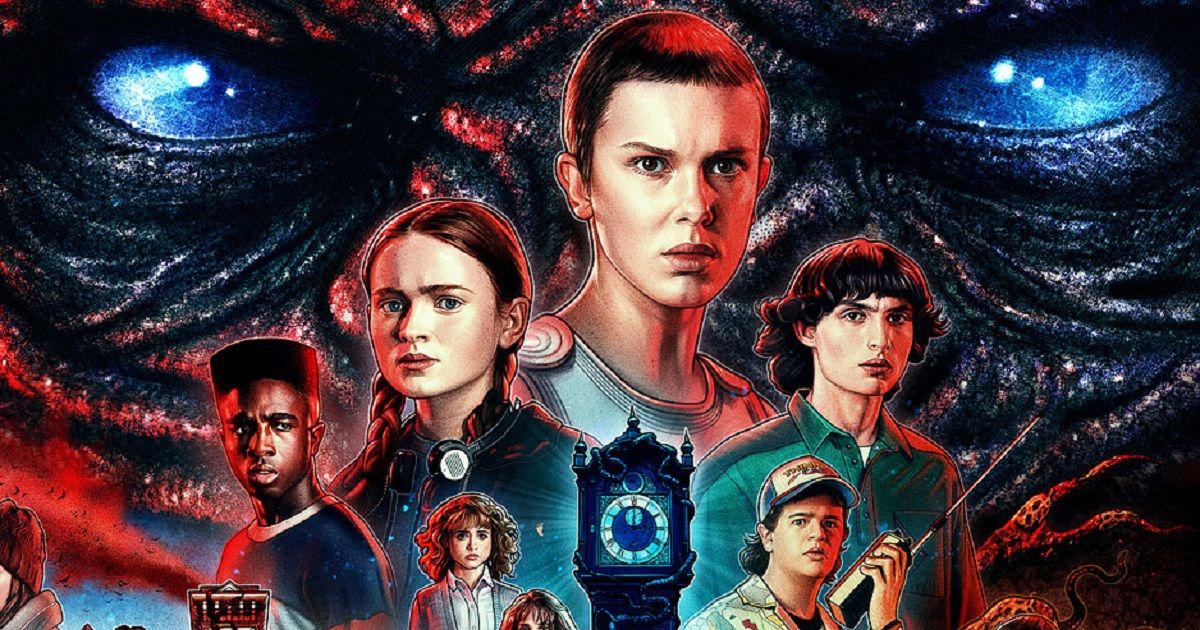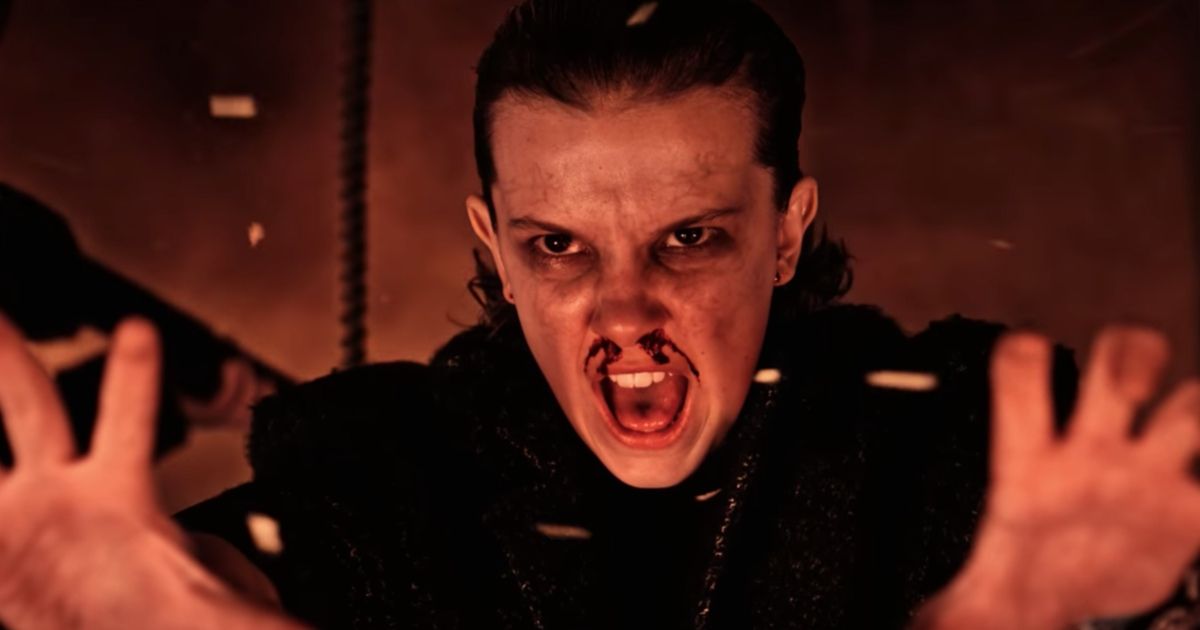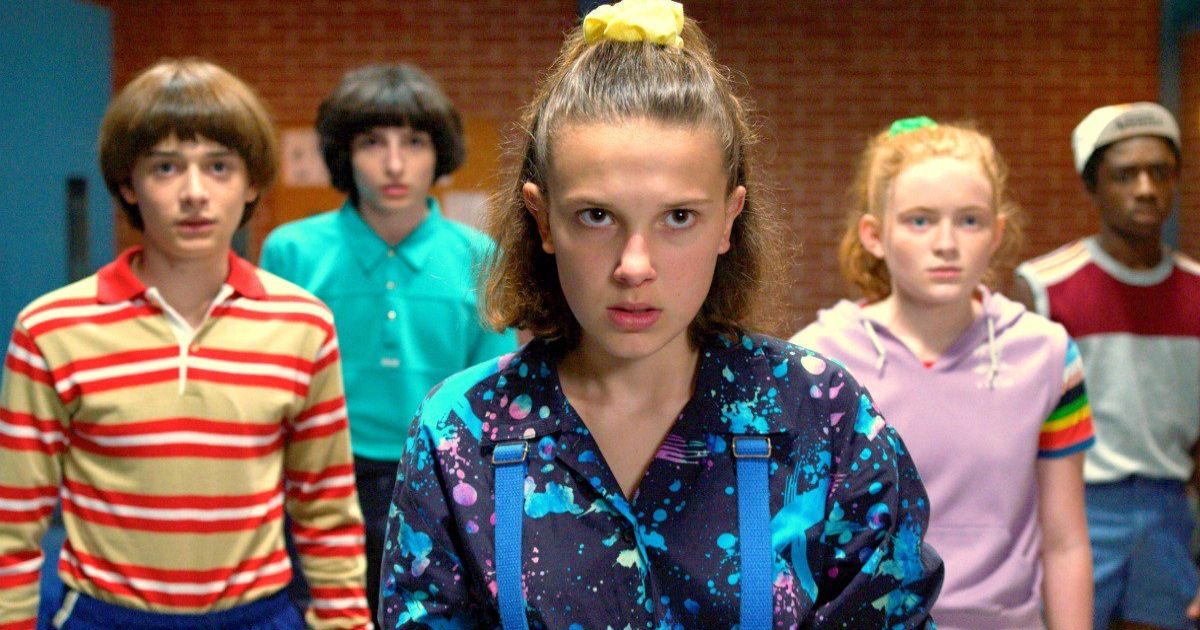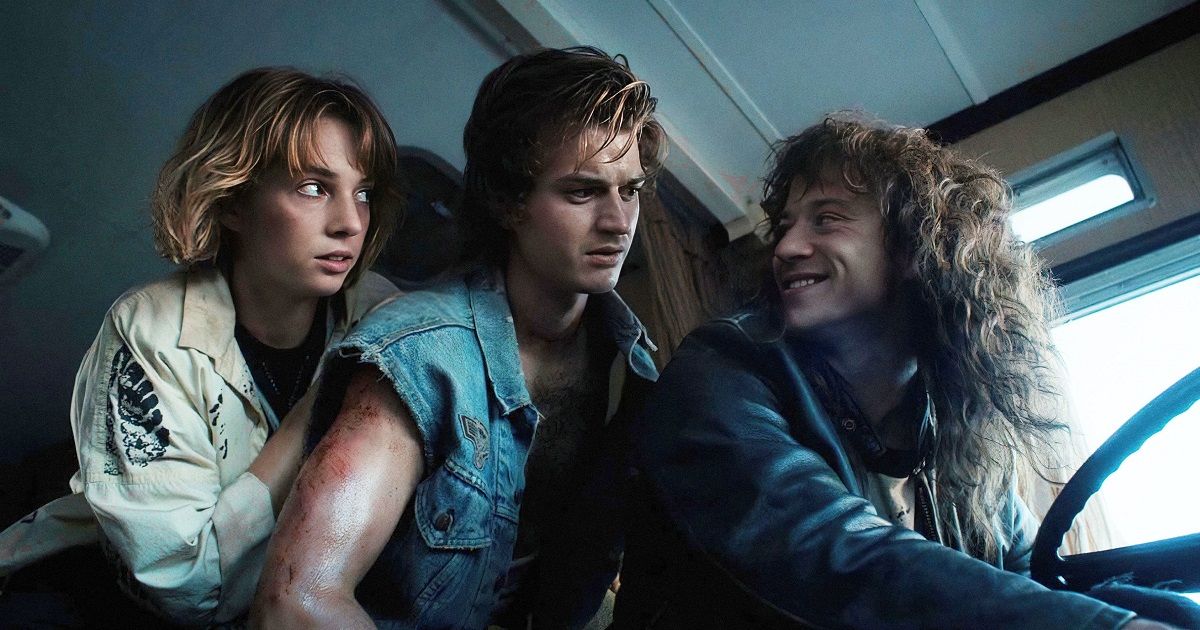Stranger Things is one of the most popular series on Netflix, and arguably on television at large. Since it premiered in July 2016, the series has become a cultural phenomenon. It has become popular with adults, teenagers, and even young kids inspiring a wave of Halloween costumes and even frequent mazes at Universal Studios Halloween Horror Nights. Stranger Things has broken out with general audiences to become a pop culture touchstone in a way few series have in the age of streaming.
The series has run for four seasons, with the fifth season set to conclude the series. As with any popular series, reaction to the show over its various seasons has shifted dramatically, with some seen as better than others. Here are the seasons of Stranger Things ranked.
Updated April 20, 2023: If you're a fan of Stranger Things, you'll be happy to know that this article has been updated with additional content by Torbjorn Frazier.
4 Season 2
Season 2 of Stranger Things premiered in October 2017 and tapped into the franchise's inherent horror vibes for a Halloween-centric season. Anticipation was high following how popular season one became. There was plenty to like about season two of Stranger Things. This comes from the addition of the character Max, introducing new character relationships between the likes of Steve and Dustin, and Sean Astin’s great turn as Bob, Joyce’s new boyfriend.
However, Season 2 did fall into a sophomore slump. One key element of this was the criticism that the second entry into Stranger Things felt too derivative of major plot elements from season one. Another part of the slightly negative perception was the unrealistic expectations put on it by the audiences, but others were creative decisions, namely the addition of an extra episode that threw off the momentum of the series.
One episode took place entirely outside of Hawkins, expanding Eleven’s backstory and introducing another batch of super-powered kids. Not only did it come at an odd place within the episode order, throwing off the forward momentum that had been built up, but it felt like a backdoor pilot for a Stranger Things spin-off (that was ultimately never further developed). This one episode might not be the worst thing on television, but it is enough to consider Stranger Things' Season 2 as the weakest season.
3 Season 3
Season 3 of Stranger Things returned the series to a summer premiere and fittingly incorporated it into the series, set during the Fourth of July weekend which was the same time it would premiere in 2019. While season three likely has the least memorable main Upside Down center story, the season does shine in its development of various character relationships.
Stranger Things wisely decides to pair up Eleven and Max as mall-crazed best friends, and the introduction of Dustin’s girlfriend Suzie is a great payoff to a series-long joke and helped relaunch the theme of The Never Ending Story back into the public consciousness. As with the other seasons, season three expands the cast this time with Robin, Steve’s co-worker and friend at Ships Ahoy who quickly established her own dynamic in the series. As well, the third season of Stranger Things adeptly develops Billy into a more dynamic antagonist for the season. This is especially the case following the generally one-note take on the character when he was introduced in the previous season.
Another notable element of this season was it deviating from the similar mystery narrative format of the original two entries. While the season is home to some slower narratives (primarily surrounding Will, Mike, and Lucas), audiences can appreciate the tonal differences in the endgame leaning more towards being a Spielberg-esque action flick motif. Stranger Things Season 3 might not be the strongest, but it certainly fixes the structural issues of season two.
2 Season 4
The most recent season of Stranger Things was an incredible comeback for the series, even though it never truly went downhill. Not since the first season had the series felt like a pop culture event, as evidenced by how Kate Bush’s Running Up That Hill became one of the songs of 2022, almost 40 years after it was first released, thanks to one of the show's majorly climactic moments. Deciding to split the release of the season into two sections over the Memorial Day and Fourth of July weekend was a smart way for Netflix to keep it in the public eye, but also the series felt like it was running on all cylinders.
Vecna made for the strong central antagonist that both seasons two and three felt like they were missing, making the threat of the Upside Down feel both more tactical and therefore more terrifying. Sadie Sink's performance as Max is a standout not just for the season, but the entire series. Instead of waiting to unite its characters, season four quickly set up seemingly disparate, but exciting storylines with various teams of characters that made for some dynamic pairings.
Audiences already knew they loved Steve with the younger kids, but also pairing Robin and Nancy, having Will and Mike recruit Dustin’s girlfriend Suzie, and allowing Lucas' sister Erica to the main team livened up the series. The argument can be made that the Hawkins-based storyline of season four is the most exciting throughout the entirety of the series thus far. And of course in classic Stranger Things fashion, the series introduced wonderful new characters like Eddie Munson and Argyle. By the time season four ended, the stage has been set for an explosive climactic final season.
1 Season 1
Oftentimes, people place the first entry of a creative project as the best and look at it with rose-tinted glasses, but it is hard to argue against the sense that Season 1 of Stranger Things is still the best. It set the template for the rest of the series and became a cultural phenomenon overnight with very little promotion. While it was a visual pastiche of various tropes and hallmarks from popular 80s media, the series crafted its own unique story with original characters that connected with audiences. Stranger Things was key in revitalizing the career of Winona Ryder, while also introducing the world to talents such as Finn Wolfhard and Millie Bobby Brown. The original season became quotable and easily identifiable and did so with a great story that captured the imagination of everyone in the summer of 2016.
Season 1 of Stranger Things also is an incredibly influential series to various projects in current media. While 80s nostalgia was certainly big in the mid-2010s, Stranger Things tapped into it in a way audiences had been waiting for. It: Chapter One probably owes a lot of its successes to Stranger Things, and resulted in a new boom of Stephen King adaptations. As well, argument can be made that Ghostbusters: Afterlife owes more to Stranger Things than the original Ghostbusters. Even the upcoming Star Wars series Skeleton Crew has been described as their version of Stranger Things. Stranger Things Season 1 is both a great season of television and one of the most influential series of the past decade.





